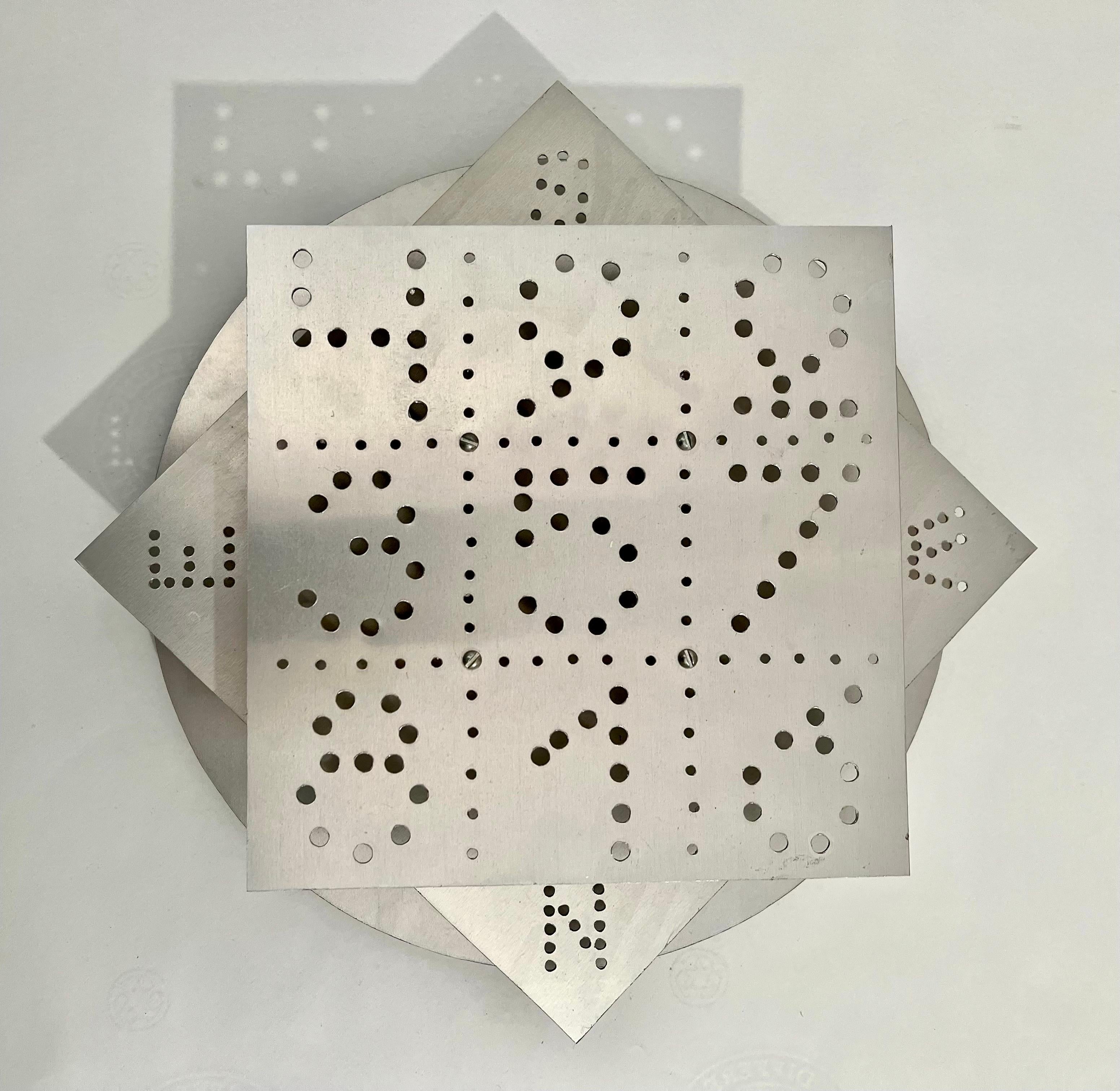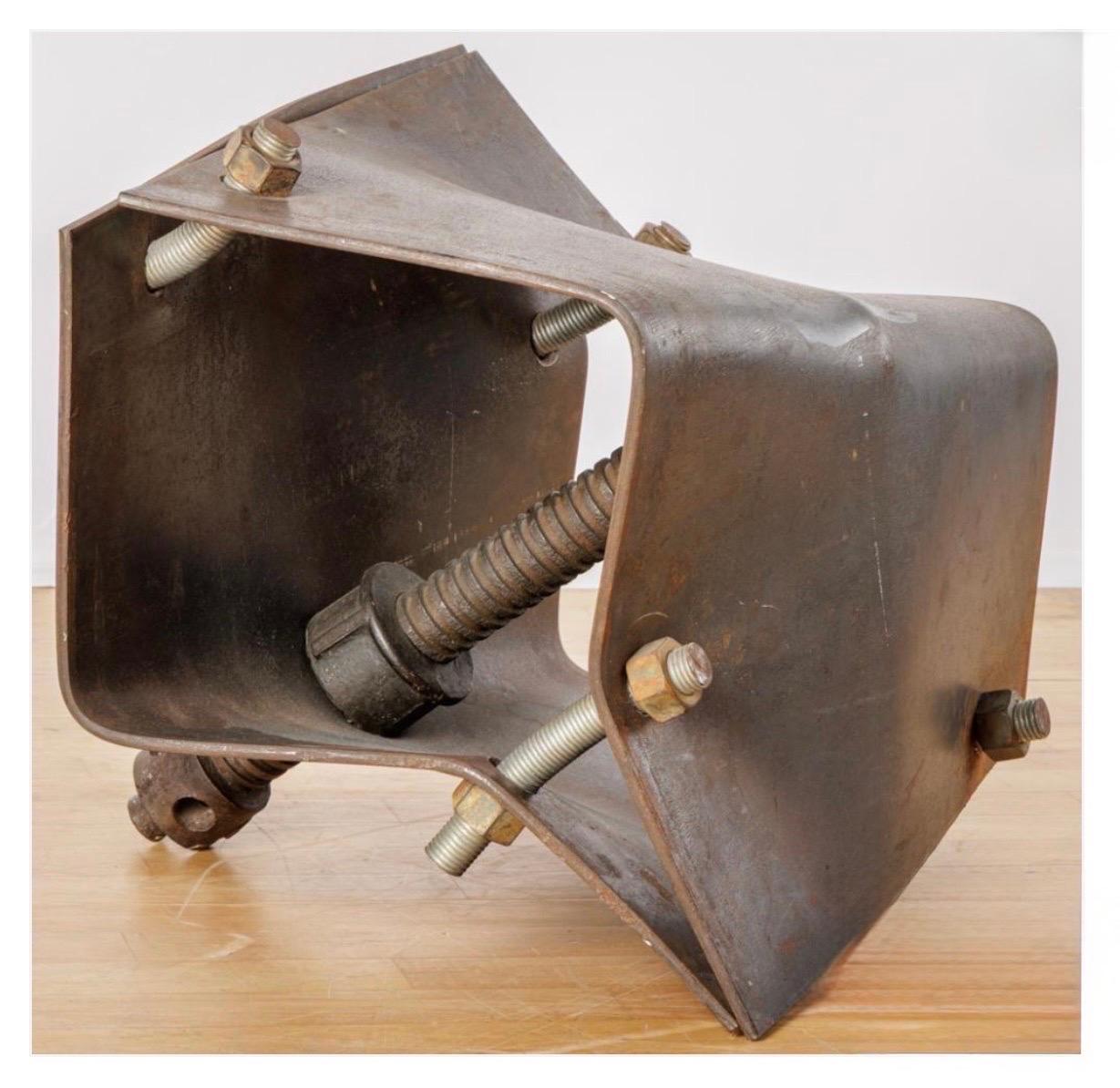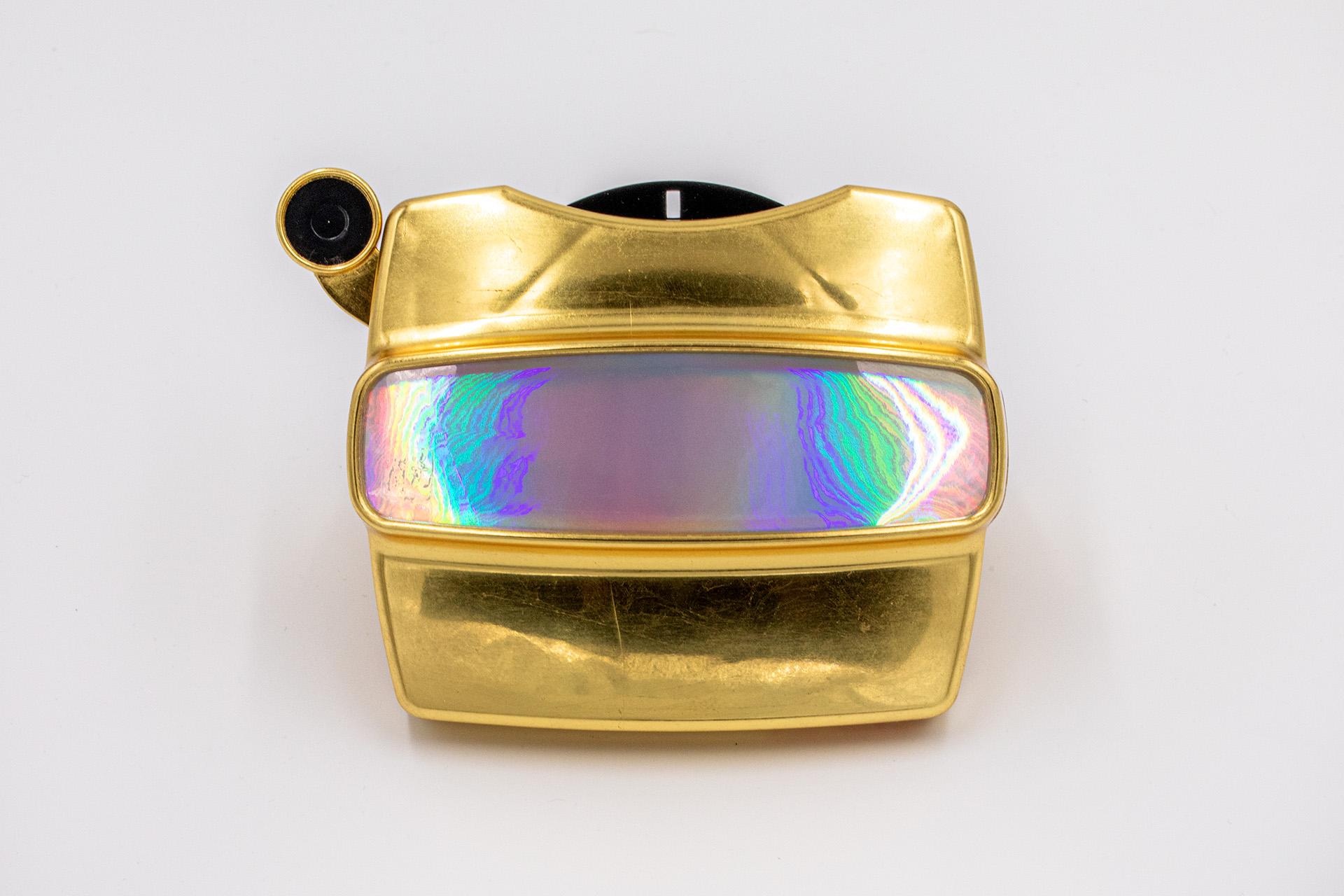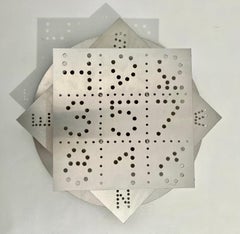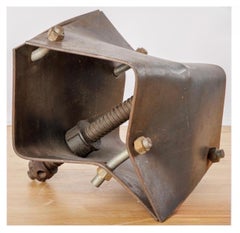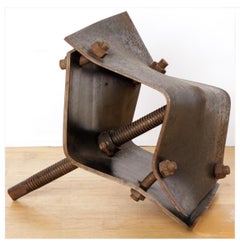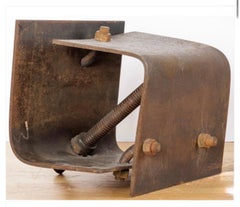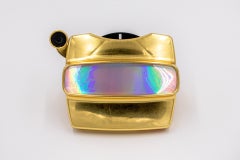Items Similar to Russian Samizdat Art Conceptual Photo Sculpture Assemblage Gerlovin & Gerlovina
Want more images or videos?
Request additional images or videos from the seller
1 of 15
Rimma Gerlovina & Valeriy GerlovinRussian Samizdat Art Conceptual Photo Sculpture Assemblage Gerlovin & Gerlovina1987-1994
1987-1994
$3,200
£2,407.70
€2,780.95
CA$4,522.44
A$4,907.53
CHF 2,600.56
MX$60,188.49
NOK 32,181.73
SEK 30,410.04
DKK 20,761.16
About the Item
Rimma Gerlovina and Valeriy Gerlovin
Clock, 1987-94
Aluminum sculpture, mixed media and c-print photograph construction, c-print, felt tip marker
13 h × 13 w × 4 d in (30 × 30 × 6 cm)
Rimma Gerlovina and Valeriy Gerlovin were founding members of the underground conceptual movement Samizdat in the Soviet Union, described in their book Russian Samizdat Art. Based on a play of paradoxes, their work is rich with philosophic and mythological implications, reflected in their writing as well. Their book Concepts was published in Russia in 2012. The work by Rimma Gerlovina and Valeriy Gerlovin is emphatically contemporary. The artist couple were part of the Moscow Conceptualists, their performance Costumes, from 1977, deepened their ongoing work with linguistic semiotic systems and their own bodies. Considering the context in which Gerlovina and Gerlovin made their work—that of political restrictions on public life, of unfreedom, and censorship—their collaborative togetherness must also be read as a space of possibility for political community and resistance. Rimma Gerlovina’s hair is featured prominently in the art of the Gerlovins as a constructing element of the body. Used for the linear drawings her braids transmit transpersonal waves reminiscent of an aura of live filaments. Long loose hairs function as threads of life; streaming in abundance, they allude to Aphrodisiac vitality and Samsonian strength. On the other hand, they are the haircloth worn during mourning and penitence. In New York they continued to make sculptural objects, and their photographic projects grew into an extended series called Photoglyphs. In their photographs, they use their own faces to explore the nature of thought and what lies beyond it. Since coming to the United States in 1980, they had many exhibitions in galleries and museums including the Art Institute of Chicago. The New Orleans Museum of Art launched a retrospective of their photography, which traveled to fifteen cities. Group exhibitions include the Venice Biennale, the Guggenheim Museum, New York, Smithsonian National Museum of American Art, Washington D.C., Bonn Kunsthalle, Germany, Tokyo Metropolitan Museum of Photography, State Tretyakov Gallery, Moscow, and others.
Samizdat or “self-published” began in the Soviet Union, and Samizdat art consists mainly of books and magazines published and distributed by the artists who made them. Samizdat art has sources in the innovative books and magazines turned out by the early 20th century Russian avant-garde—artists and writers like Olga Rozanova, Vladimir Mayakovsky, El Lissitzky, and Alexander Rodchenko.
Artists as varied as Alexander Archipenko, Leon Bakst, Marc Chagall, Naum Gabo, Alexandra Exter have all been associated with the movement. Later Samizdat examples include the poster portraits of Lenin and Stalin, both 1982, by the now New York–based Vagrich Bakhchanyan, a leading Samizdat personality whose career spans the development of the medium. Victor Tupitsyn, collages, Lev Nussberg Correspondence of K.S. Malevich (1878–1935) to L.V. Nussberg (1937–1998), 1981, texts and drawings made to appear as if by Malevich—the ultimate homage from the Russian avant-garde of the late 20th century to that of the early. Komar and Melamid, Valentin Goroshko and Elisabeth Clark, Alexander Kosolapov, Lev Rubinshtein, and Anatoly Ur. They were prominent members of the Post Soviet Avant Garde a group that included Ilya Kabakov, Vitaly Komar and Alexander Melamid, Grisha Bruskin, Leonid Sokov, Alexander Kosolapov and Erik Bulatov. Books featuring their works: Art on the Edge and Over by Linda Weintraub; Reflections in a Glass Eye (ICP and Bulfinch Press); Face, The New Photographic Portrait (Thames & Hudson); Moscow Conceptualism in Context (Prestel); Serpenti in Art (Bulgari); also art history college books, such as Understanding Art and Foundations of Art and Design by Lois Fichner-Rathus (Cengage), and others.
Their works have appeared on the covers of The New York Times Magazine; Zoom; The Sciences; The Buddhist Review Tricycle. In the Millennium Issue on art, The New York Times Magazine gave them a spread. (Excerpt from publications)
Museum collections include The Art Institute of Chicago; The Guggenheim Museum, NYC; The Getty Research Institute, Los Angeles; International Center of Photography, NYC; Centre Pompidou, Paris (cubes) (Mirror Game) ; Tate Modern, London; The Museum of Fine Arts, Houston; Cincinnati Art Museum; Denver Art Museum; Nasher Museum at Duke University, NC; the Polaroid Photograph collection, Yale University Art Gallery, New Haven, CT; The Scottsdale Museum of Contemporary Art, AZ; Ackland Museum of Art, NC; Zimmerli Art Museum at Rutgers University, NJ; Museo d'Arte Moderna di Trento e Rovereto, Italy; National Gallery of Australia, Canberra; The State Tretyakov Gallery, Moscow; Museum Moderner Kunst Ludwig, Vienna, and others. Their work has also been sold by leading auction houses, including Sotheby’s, Christie’s, and Phillip’s.
- Creator:Rimma Gerlovina & Valeriy Gerlovin (Russian, American)
- Creation Year:1987-1994
- Dimensions:Height: 12.5 in (31.75 cm)Width: 12.5 in (31.75 cm)Depth: 3 in (7.62 cm)
- Medium:
- Movement & Style:
- Period:
- Condition:aluminum shows minor wear, some light oxidation and a few faint abrasions scattered throughout, typical with age and materials. Overall, works present well.
- Gallery Location:Surfside, FL
- Reference Number:1stDibs: LU38211480342
About the Seller
4.9
Platinum Seller
Premium sellers with a 4.7+ rating and 24-hour response times
Established in 1995
1stDibs seller since 2014
1,807 sales on 1stDibs
Typical response time: 1 hour
- ShippingRetrieving quote...Shipping from: Surfside, FL
- Return Policy
Authenticity Guarantee
In the unlikely event there’s an issue with an item’s authenticity, contact us within 1 year for a full refund. DetailsMoney-Back Guarantee
If your item is not as described, is damaged in transit, or does not arrive, contact us within 7 days for a full refund. Details24-Hour Cancellation
You have a 24-hour grace period in which to reconsider your purchase, with no questions asked.Vetted Professional Sellers
Our world-class sellers must adhere to strict standards for service and quality, maintaining the integrity of our listings.Price-Match Guarantee
If you find that a seller listed the same item for a lower price elsewhere, we’ll match it.Trusted Global Delivery
Our best-in-class carrier network provides specialized shipping options worldwide, including custom delivery.More From This Seller
View AllRussian Samizdat Art Conceptual Compass Sculpture Assemblage Gerlovin, Gerlovina
Located in Surfside, FL
Rimma Gerlovina and Valeriy Gerlovin
Compass, 1988
Aluminum sculpture, mixed media and c-print photograph construction, c-print, felt tip marker
12.5 h × 12.5w × 4 d in (30 × 30 × 6 cm)
Rimma Gerlovina and Valeriy Gerlovin were founding members of the underground conceptual movement Samizdat in the Soviet Union, described in their book Russian Samizdat Art. Based on a play of paradoxes, their work is rich with philosophic and mythological implications, reflected in their writing as well. Their book Concepts was published in Russia in 2012. The work by Rimma Gerlovina and Valeriy Gerlovin is emphatically contemporary. The artist couple were part of the Moscow Conceptualists, their performance Costumes, from 1977, deepened their ongoing work with linguistic semiotic systems and their own bodies. Considering the context in which Gerlovina and Gerlovin made their work—that of political restrictions on public life, of unfreedom, and censorship—their collaborative togetherness must also be read as a space of possibility for political community and resistance. Rimma Gerlovina’s hair is featured prominently in the art of the Gerlovins as a constructing element of the body. Used for the linear drawings her braids transmit transpersonal waves reminiscent of an aura of live filaments. Long loose hairs function as threads of life; streaming in abundance, they allude to Aphrodisiac vitality and Samsonian strength. On the other hand, they are the haircloth worn during mourning and penitence. In New York they continued to make sculptural objects, and their photographic projects grew into an extended series called Photoglyphs. In their photographs, they use their own faces to explore the nature of thought and what lies beyond it. Since coming to the United States in 1980, they had many exhibitions in galleries and museums including the Art Institute of Chicago. The New Orleans Museum of Art launched a retrospective of their photography, which traveled to fifteen cities. Group exhibitions include the Venice Biennale, the Guggenheim Museum, New York, Smithsonian National Museum of American Art, Washington D.C., Bonn Kunsthalle, Germany, Tokyo Metropolitan Museum of Photography, State Tretyakov Gallery, Moscow, and others.
Samizdat or “self-published” began in the Soviet Union, and Samizdat art consists mainly of books and magazines published and distributed by the artists who made them. Samizdat art has sources in the innovative books and magazines turned out by the early 20th century Russian avant-garde—artists and writers like Olga Rozanova, Vladimir Mayakovsky, El Lissitzky, and Alexander Rodchenko.
Artists as varied as Alexander Archipenko, Leon Bakst, Marc Chagall, Naum Gabo, Alexandra Exter...
Category
1980s Conceptual Figurative Photography
Materials
Metal
Corten Steel Sculpture Oleg Sohanievich Non Conformist Avant Garde Ukrainian
Located in Surfside, FL
Oleg Sohanievich (Soviet Ukrainian, American 1935-2017)
Steel plates and rods Stress Steel Sculpture, 1997,
Hand signed and dated Oleg Sohanievich '97,
Dimensions: 18 1/2" h., 21" ...
Category
1970s Post-Modern Abstract Sculptures
Materials
Steel
Corten Steel Sculpture Oleg Sohanievich Non Conformist Avant Garde Ukrainian
Located in Surfside, FL
Oleg Sohanievich (Soviet Ukrainian, American 1935-2017)
Steel Stress Sculpture #3, 1982,
Hand signed and dated Oleg Sohanievich '82
Dimensions: 17" h., 23" w., 16" d.
Very heavy
Th...
Category
1980s Post-Modern Abstract Sculptures
Materials
Steel
Corten Steel Sculpture Oleg Sohanievich Non Conformist Avant Garde Ukrainian
Located in Surfside, FL
Oleg Sohanievich (Soviet Ukrainian, American 1935-2017)
Steel plates and rods Stress Steel Sculpture, 1995,
Hand signed and dated Oleg Sohanievich '95,
Dimensions: 15" h., 14" w., ...
Category
1970s Post-Modern Abstract Sculptures
Materials
Steel
Abstract Minimalist Geometric Sculpture
By Adolph Dioda
Located in Surfside, FL
Adolph T. DIODA (1915-1991)
Birth place: Aliquippa, PA
Lived in West Aliquippa, PA; Detroit, MI; Phila. & Jenkintown, PA
Profession: Sculptor, educator
Studied: Carnegie Inst Technol; Cleveland School of Art; Barnes Fnd., Art Student League New York, NY; also with John B Flannagan, New York.
Exhibited: WMAA, 1939-40; Carnegie Inst., 1941; AIC, 1940, 1951; Sculpture Int., Philadelphia Mus. of Art, 1940-49; AA Pittsburgh, 1941-45; Carved in Stone, Bucholtz Gallery, New York, 1945; PAFA, 1946-47 & 1968 (prize, 1947); Philadelphia A. All., 1951; Carlen Gal., Philadelphia, 1951; 2-man exh. with William Kienbusch...
Category
1970s Minimalist Abstract Sculptures
Materials
Stone, Marble
Horst Kalinowski Abstract Collage Assemblage Mixed Media Sculpture Painting
Located in Surfside, FL
Horst Egon Kalinowski (German, 1924-2013).
Mixed media assemblage collage
Divan Ophidian.
Hand signed in marker upper right and dated 82 Bagnols-en-Foret, Titled upper left.
Additionally titled and dated on verso.
Dimensions: 30" x 24 1/4" (with frame 27" x 32 3/4") inches.
Born in 1924 in Dusseldorf, From 1945 to 1948, he studied at the Academy of Fine Arts in Düsseldorf. In 1949-1950, he stayed in Rome and Venice, Italy. From 1950 to 1952, in Paris, France he studied in the abstract art workshop of Jean Dewasne and Edgard Pillet...
Category
20th Century Modern Abstract Paintings
Materials
Fabric, Textile, Paint, Mixed Media, Board
You May Also Like
Abstract Sculpture by Edmondo Cirillo Stele
Located in Brescia, IT
This engagind artwork was create in 1980 by the Italian artist Edmondo Cirillo. It was forged in bronze and then nickel plated. The title of this piece is "Stele". Translate in "Stel...
Category
Late 20th Century Post-Modern Abstract Sculptures
Materials
Bronze
Scultura Spezzata Broken Sculpture 1975 Italy by Roberto Vecchione
Located in Brescia, IT
This intense and engaging abstract bronze sculpture was created by the Italian artist Roberto vecchione. The title " Scultura Spezzata" translated in "Broken Sculpture...
Category
Late 20th Century Post-Modern Abstract Sculptures
Materials
Bronze
Abstract Sculpture by Urano Palma Simbiosi
Located in Brescia, IT
Urano Palma is an Italian artist who starts to create his artworks following the philosophy of Lucio Fontana.
He specially worked to the sculptured furniture, inventing a casting tec...
Category
Late 20th Century Post-Modern Abstract Sculptures
Materials
Bronze
Japanese Contemporary Sculpture by Kojun - VM9HK2020
By Kojun
Located in Paris, IDF
Mirror finish gold leaf over ABS thermoplastic viewer / Diffraction film diffuser
Kojun is an self-taught multimédia American artist born in 1977 based in Tokyo, Japan since 1999. K...
Category
2010s Conceptual Mixed Media
Materials
Mixed Media
1980 Italy Post-Modern Abstract Sculpture Alessandro Guerriero Portabuono Qua
By Alessandro Guerriero
Located in Brescia, IT
This artwork was created by the Italian artist Alessandro Guierriero, it is a multiple of a serie of specimens made in limited edition not numbered.
The set is forged in aluminum and...
Category
Late 20th Century Abstract Abstract Sculptures
Materials
Metal
French Contemporary Sculpture by Irakli Nasidze - La Belle Endormine
Located in Paris, IDF
Glazed Ceramic
Irakli Nasidze is a Franco-Georgian artist born in 1973 who lives and works between Paris, France & Tbilisi, Georgia. At the Tbilisi Sch...
Category
2010s Figurative Sculptures
Materials
Glaze, Ceramic
